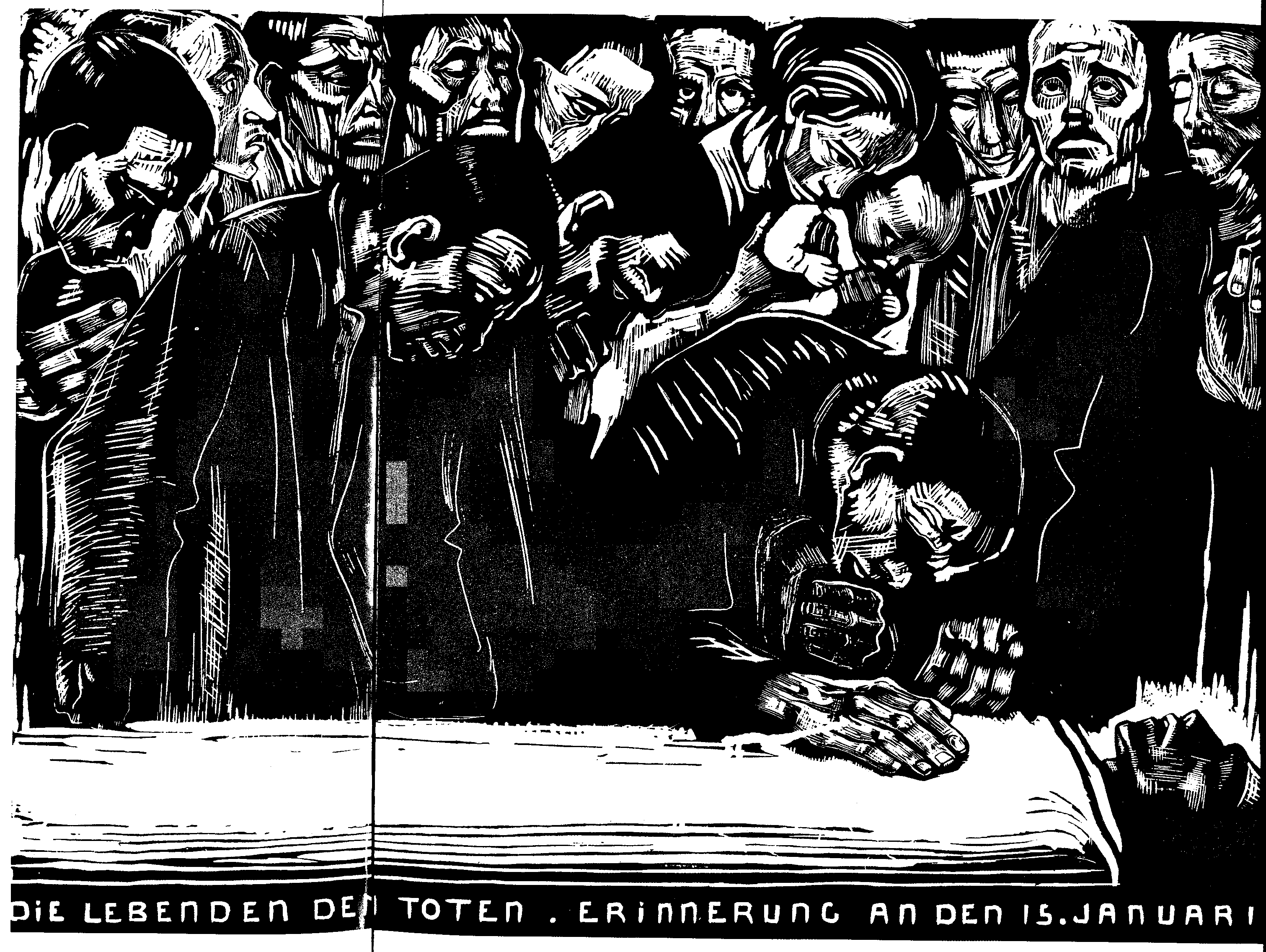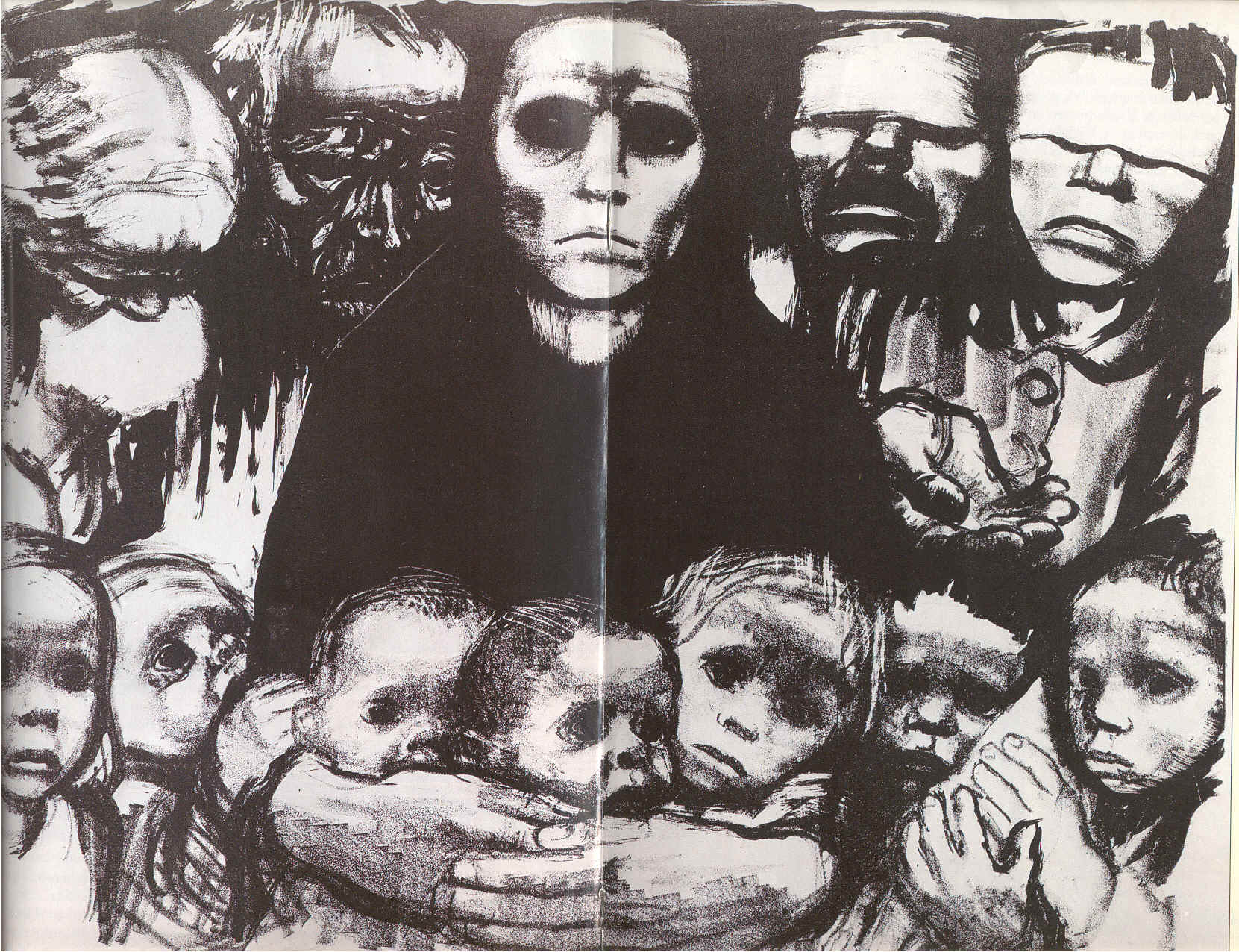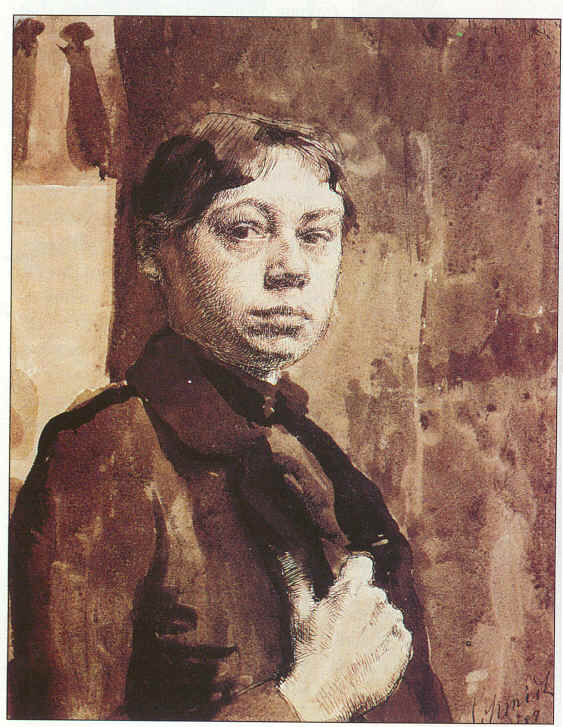Kathe Kollwitz - A Political Creator
Kathe Kollwitz once stated, "Drawing is the only thing that makes my life bearable." However, this statement proves to be ironic for the fact that she made her life bearable by drawing people plagued by sickness or poverty. Born in East Prussia in 1867, Kathe Schmidt took an active interest in art throughout her lifetime. After she obtained her education, she went on to teach art techniques to students.

Memorial Sheet to Karl Liebknecht. 1919. Woodcut. Private Collection.
In 1891, Kathe married Dr. Karl Kollwitz and moved to Berlin, Germany. They lived in one of the poorest slums of the city, and Kathe was constantly reminded of the poverty and destitution that surrounded her and her husband. Their situation worsened in the time between the two World Wars, and it was during this time in which she began to make her art increasingly political.

The Survivors, 1923. Lithograph. National Gallery of Art, Washington, DC., Rosenwald Collection.
Kollwitz's principle medium was in the use of lithographs and woodcuts. The process of lithography is greatly similar to that of printmaking. Kollwitz preferred this technique because it allowed her to work mainly in black and white, while also allowing her to make many prints at once. She appreciated the raw effect and sharp contrasts, feeling that her message was better portrayed in this way. In keeping things simple, she discovered that the viewer would not be able to escape the central theme by focusing on the beauty of color or line.

Self-Portrait, Drawing, 1933. Charcoal on brown paper. National Gallery of Art, Washington, D.C., Rosenwald Collection.
Kathe Kollwitz became the first woman elected into the Prussian Academy. However, after her involvement in political art and expression of her political beliefs began to conflict with Germany's harsh regulations, she was expelled from the Academy. Kollwitz's house was bombed in 1943, and soon after her art was labeled as degenerate by Nazis. After being forbidden to exhibit her work, she began to integrate her work into the homes of the families that could not afford professional artwork. Despite all of her efforts, Kathe Kollwitz never got the chance to see all of the killing and violence of the war come to an end. She died in 1945, eight days before the end of WW2. I greatly consider this woman a martyr for the future of political artists. She was persecuted by the hateful government, and she also set the example of courage and uprightness for women artists to come.